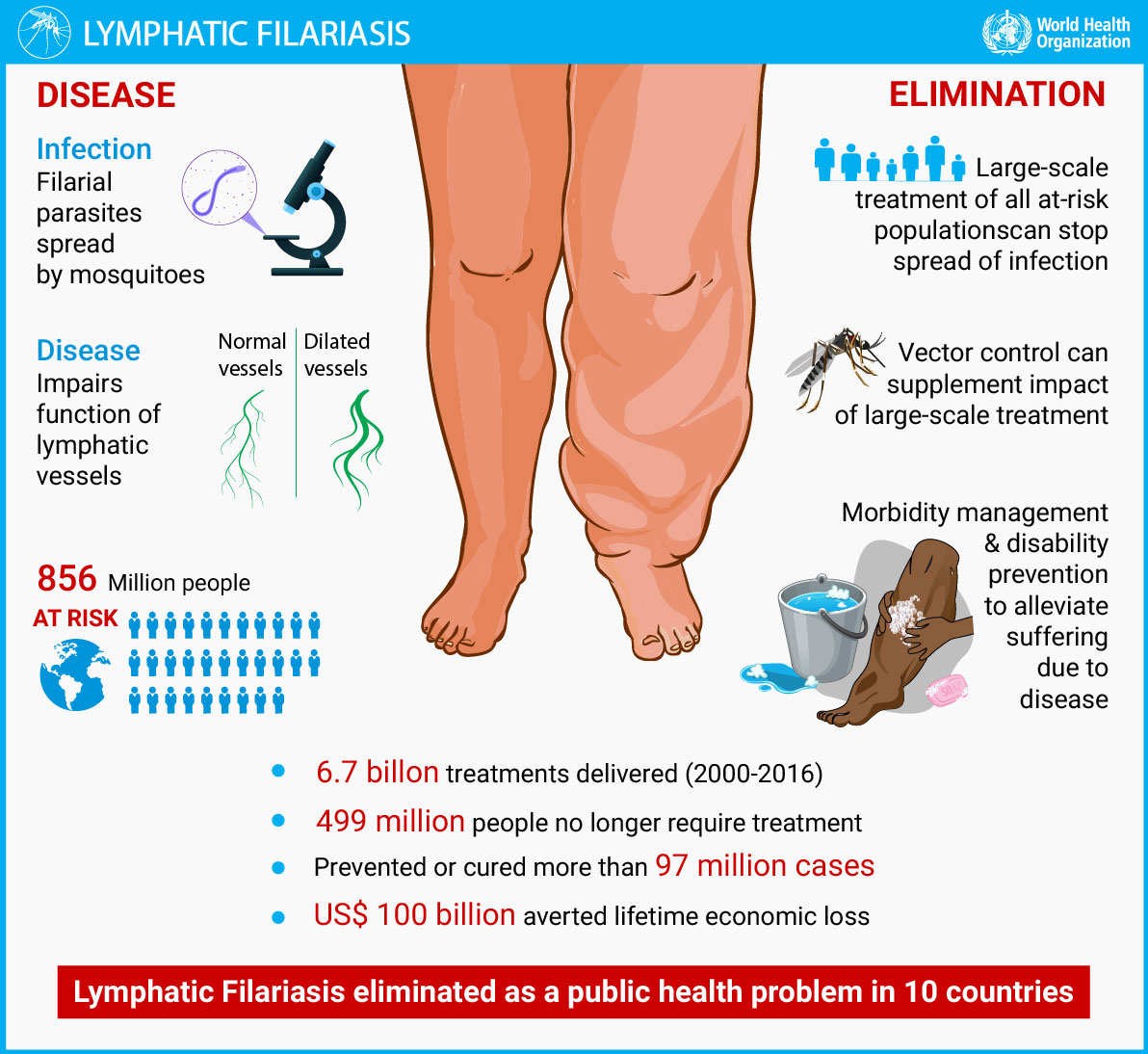
Starting on 23rd February 2023, the government of Nepal is launching a common medicine program to combat Lymphatic Filariasis disease, also known as Hattipaile. The campaign will be rolled out across 15 districts, including Jhapa, Morang, Dhanusha, Mahottari, Sarlahi, Rautahat, Bara, Rasuwa, Lamjung, Parbat, Baglung, Kapilvastu, Dang, Banke, and Kailali. The target is to provide medicine to 84 lakh 98 thousand 501 individuals in these areas.
Lymphatic Filariasis disease is a contagious condition spread by mosquito bites, and its symptoms include fever, chills, cramping, pain, and swelling in various parts of the body, among others. This disease is called Lymphatic Filariasis disease because it causes the legs of infected individuals to become thicker and resemble those of elephants. The parasites of the disease can reside in the body without exhibiting any symptoms, but after some time, various symptoms appear, affecting the quality of life of those affected. In Nepal, around 32,000 people are struggling with hearing loss, hydrocele, and disability due to Lymphatic Filariasis disease.
The government has previously launched a campaign to prevent the spread of Lymphatic Filariasis disease since 2003, and it aims to eliminate Lymphatic Filariasis disease as a public health problem in Nepal by 2030. In the last survey conducted by the government, the presence of Lymphatic Filariasis disease was discovered in Rasuwa, leading to the implementation of this program across 15 districts, including Rasuwa, to combat the issue.
Public health expert Ramkumar Mahatto suggests that people in affected districts take the medicine, which is safe and can prevent the spread of the disease. Even if the symptoms of Lymphatic Filariasis disease are not visible, the parasites of the disease can still reside in the body. With the intake of medicine, these parasites will die, and the disease will not cause harm in the future. Moreover, the medicine does not transfer the parasites of the disease to other healthy people.
It is recommended not to give the medicine to children under two years of age, pregnant women, those who have given birth within the last seven days, people with kidney disease, bedridden patients, and those under the supervision of a doctor for their whole life, such as dialysis for kidney disease. The medicine should not be taken on an empty stomach, and some side effects like headache, nausea, and stomach ache may occur. However, these symptoms usually disappear on their own within a few hours, and if they persist, consulting a nearby healthcare facility is recommended.
The common medicine program against Lymphatic Filariasis disease launched by the Nepalese government is a vital step towards preventing the spread of this condition. It is essential to take this medicine as per the guidelines provided by healthcare professionals to combat Lymphatic Filariasis disease and prevent further complications.
Lymphatic Filariasissis: Understanding the Disease, Symptoms, Treatment, and Prevention
Lymphatic Filariasissis, commonly known as Fileria disease, is caused by infection with filamentous bacteria Wuchereria bancrofti, Brugia malayi, and B timori, which are transmitted to humans through the bite of an infected female Culex mosquito. While outbreaks of Ucheraria bancrofti have been observed only in Nepal, about 85.6 million people in 52 countries worldwide are currently at risk of elephantiasis. The symptoms of Fileria disease may appear only after a few years of the entry of these parasites into the human body, and they include fever, headache, nausea, vomiting, swollen glands, and swollen body parts such as hands, feet, testicles, vagina, breasts, and legs, which can look like an elephant. Tropical pulmonary eosinophilia can also occur, causing asthma, cough, and blood in sputum.
Although Fileria disease is not considered fatal, after the damage to the organs, it cannot be supplied with any medicine. Therefore, it is important for people who live in or travel to areas affected by Culex mosquitoes to take preventive measures. Under the goal of eradicating Fileria disease from Nepal by 2020, the Epidemiology and Disease Control Division has continued the program of providing anti-disease medicine in Fileria-affected areas.
Diagnosis of Fileria disease can be done by looking at the patient's symptoms and through blood and skin tests. Treatment options include cleaning and keeping the swollen part dry, applying moisturizer cream, doing normal exercise, and taking medication like ivermectin and mebendazole. Surgery may also be an option, particularly in reducing the discomfort caused by swollen testicles. Prevention of Fileria disease involves taking the anthelmintic Alvendazole and diethylcarbamazine pills once a year, which can treat Lymphatic Filariasis along with other stomach worms, and practicing good hygiene. However, pregnant women, those who have given birth up to one week, those with diabetes, heart disease, kidney disease, jaundice, chronic liver disease, weak patients, and children under two years of age should avoid taking these pills. Overall, taking preventive measures, early diagnosis, and timely treatment can help in controlling and eradicating Fileria disease.





